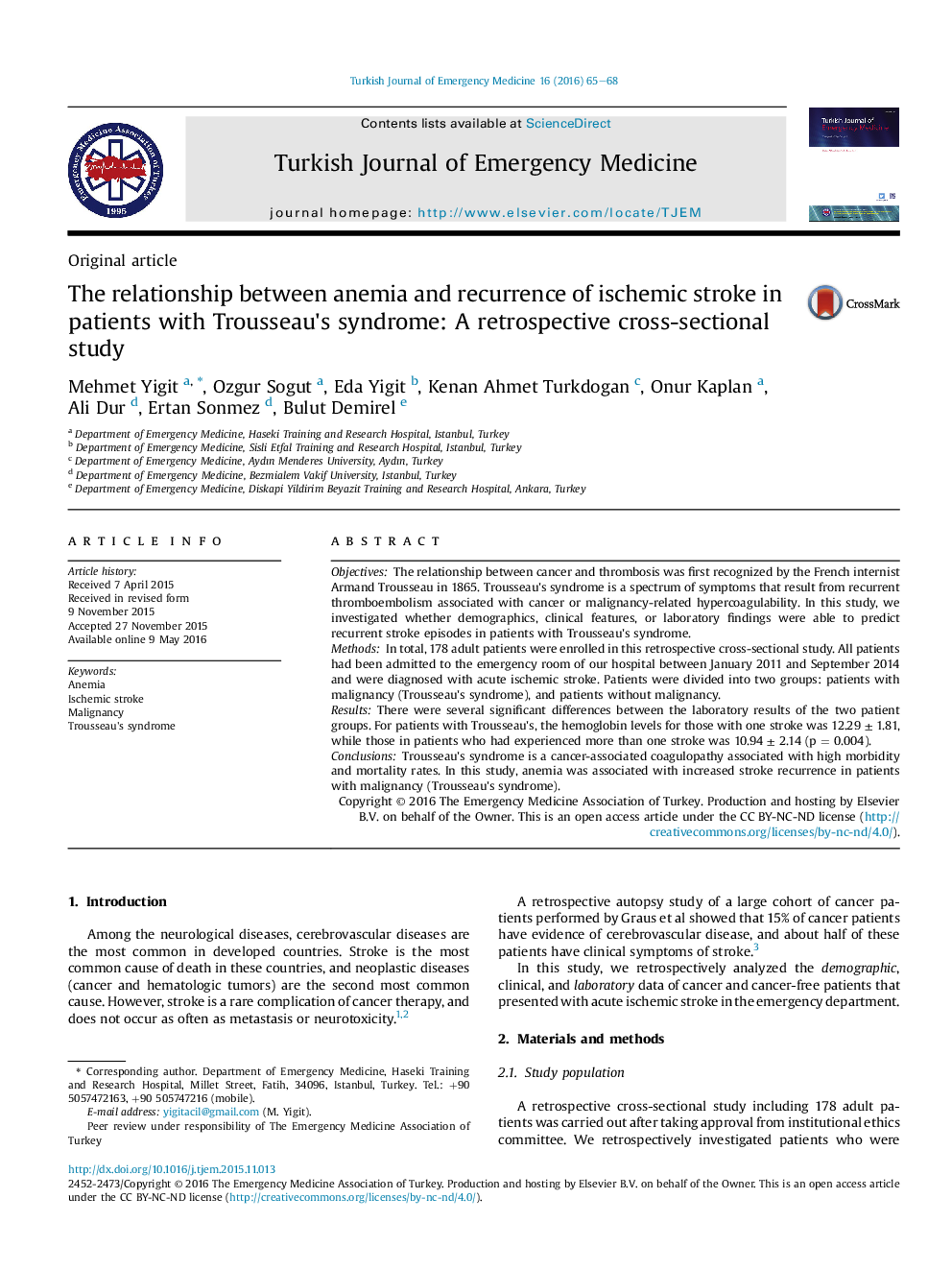| Article ID | Journal | Published Year | Pages | File Type |
|---|---|---|---|---|
| 2604042 | Turkish Journal of Emergency Medicine | 2016 | 4 Pages |
ObjectivesThe relationship between cancer and thrombosis was first recognized by the French internist Armand Trousseau in 1865. Trousseau's syndrome is a spectrum of symptoms that result from recurrent thromboembolism associated with cancer or malignancy-related hypercoagulability. In this study, we investigated whether demographics, clinical features, or laboratory findings were able to predict recurrent stroke episodes in patients with Trousseau's syndrome.MethodsIn total, 178 adult patients were enrolled in this retrospective cross-sectional study. All patients had been admitted to the emergency room of our hospital between January 2011 and September 2014 and were diagnosed with acute ischemic stroke. Patients were divided into two groups: patients with malignancy (Trousseau's syndrome), and patients without malignancy.ResultsThere were several significant differences between the laboratory results of the two patient groups. For patients with Trousseau's, the hemoglobin levels for those with one stroke was 12.29 ± 1.81, while those in patients who had experienced more than one stroke was 10.94 ± 2.14 (p = 0.004).ConclusionsTrousseau's syndrome is a cancer-associated coagulopathy associated with high morbidity and mortality rates. In this study, anemia was associated with increased stroke recurrence in patients with malignancy (Trousseau's syndrome).
